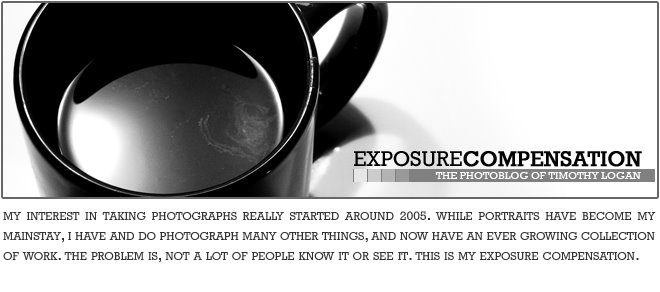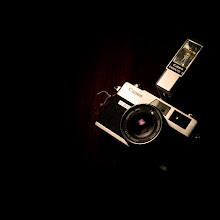When I was packing for Cancun I had a difficult time narrowing down what cameras I would take with me. My SX-70 Sonar was a no brainer as I pretty much use it exclusively for my Impossible Project films. I wanted to take a medium format camera to shoot some 120 slide film, and, decided pretty quickly on my Mamiya 645 as I've been shooting it more often lately. When it came time to pick a 35 mm camera thought I was a bit stumped on whether to take my usual kit - a Canon FTb with a 55mm f/1.2 - or something much smaller, lighter and much less valuable - the Canon Canonet QL17 Rangefinder that I've never even run a roll of film through.
In the end I decided to go with the Canon rangefinder for it's portability, and, in all honesty because if something tragic happened to it I wouldn't be heart broken over it (which would not be the case when it comes to the Canon FTb kit). Upon getting my film back from the lab this week and taking a couple days to scan it all I was really surprised with the quality of the images that I got and pretty happy with the decision I ended up making. I'd even go so far as to say after shooting with this camera (which has a great feel in your hands) and seeing these photos that this camera moves up my list as one of my favorite cameras to shoot with.
As I mentioned, the Canon Canonet is a 35mm rangefinder that is relatively inexpensive (unless you can find the more rare solid black model) and easy to use. There is, of course, a full auto mode on this camera that essentially turns the camera into a type of shutter priority mode that only allows the shutter to fire when the exposure falls safely in the camera's range of f/1.7 to f/16. The only issue with this automatic setting is finding the proper battery to get your light meter to work. Originally this camera used an old mercury battery (1.3v) which you can no longer buy. There are, however, plenty of resources out there for replacement batteries for this type of camera. The one I ended up with was the PX625A - a slightly higher 1.5v Alkaline battery. While I couldn't tell you exactly how far off the light meter is from using a higher rated battery, I'd guess to most it's negligible.
As far as today's photos... they were actually all taken on a roll of expired Kodak Gold 800. This was, by far, the cheapest film that I had with me on this trip and, surprisingly, ended up producing some of my favorite photos. There's a fair amount of grain in some of these darker photos, but, I think this film actually rendered out some beautiful, soft colors that are sometimes reminiscent of a painting.
This would also probably be a good time to give a little plug to the lab who developed all of my film from this trip - Old School Photo Lab in Dover NH. I went with Old School for a couple of reasons - they are friends and a great asset to the film community, and, I had some slide film in the batch that I wanted processed from a reputable source. Needless to say, Old School did a great job with this film and have with any film I've ever sent their way. If you are not familiar - I highly recommend them for all of your film processing needs.
I think that about wraps up everything I wanted to say in today's (lengthy) post. As always... I hope you found some of this information helpful, educational or even slightly entertaining. If not, then I hope you at least looked through these photos and found one or two that you like as much as I do. There will be more photos coming soon and if you've read this far... thanks, and I hope you've enjoyed.














No comments:
Post a Comment